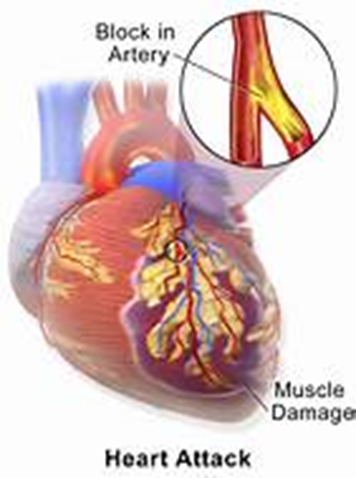A client who has a recent closed head injury reports a severe headache and is restless. Which of the following is an appropriate nursing intervention?
Place a cool cloth on the forehead.
Elevate the head of the bed 30 degrees.
Administer morphine 2 mg IV.
Prepare for a lumbar puncture.
The Correct Answer is B
Choice A reason:Placing a cool cloth on the forehead may provide comfort but does not address intracranial pressure, which could be causing the headache[^10^].
Choice B reason:Elevating the head of the bed 30 degrees helps to decrease intracranial pressure and can alleviate headache symptoms associated with a closed head injury[^10^].
Choice C reason:Administering morphine for pain relief should be done with caution, as it can depress respiration and mask changes in the level of consciousness, which are important indicators of neurological status[^10^].
Choice D reason:A lumbar puncture is contraindicated in the presence of increased intracranial pressure due to the risk of brain herniation[^10^].
Nursing Test Bank
Naxlex Comprehensive Predictor Exams
Related Questions
Correct Answer is ["A","B","D"]
Explanation
Title: Choice A reason: Beta-blocking agent Beta-blocking agents are often used in the management of cirrhosis of the liver. They are particularly useful in managing portal hypertension, a common complication of cirrhosis. Beta-blockers lower elevated portal pressure and protect against variceal hemorrhage, a serious complication of portal hypertension. Therefore, a beta-blocking agent may be ordered for a client with cirrhosis of the liver.
Title: Choice B reason: Diuretic Diuretics are commonly used in the management of fluid retention, a frequent complication in patients with cirrhosis. Fluid retention can lead to conditions such as ascites (abdominal fluid accumulation) and edema (swelling in the legs, feet, or ankles)2. Diuretics help to remove excess fluid from the body, thereby managing these symptoms. Therefore, a diuretic may be ordered for a client with cirrhosis of the liver.
Title: Choice C reason: Opioid analgesic While opioid analgesics are powerful pain relievers, they should be used with caution in patients with cirrhosis of the liver. Opioids can precipitate hepatic encephalopathy, a condition characterized by altered mental status and neuromuscular dysfunction, which is a serious complication of cirrhosis. Therefore, an opioid analgesic may not be the best choice for a client with cirrhosis of the liver.
Title: Choice D reason: Lactulose Lactulose is a non-absorbable sugar that is widely used in the treatment of hepatic encephalopathy, a common complication in patients with cirrhosis. It works by reducing the absorption of ammonia in the gut, thereby lowering blood ammonia levels and improving symptoms of hepatic encephalopathy. Therefore, lactulose may be ordered for a client with cirrhosis of the liver.
Title: Choice E reason: Sedative Sedatives should be used with caution in patients with cirrhosis of the liver. Like opioids, they can precipitate hepatic encephalopathy. Therefore, a sedative may not be the best choice for a client with cirrhosis of the liver.
Correct Answer is C
Explanation
Choice A reason: Myocardial infarction (MI) is not limited to occurrences with exertion. While stable angina typically occurs during physical activity or emotional stress, MI can happen at any time, even at rest. The underlying cause of an MI is the complete blockage of blood supply to a part of the heart muscle, usually due to a blood clot in a coronary artery. This blockage can lead to the death of heart muscle tissue, a condition that requires immediate medical attention.
Choice B reason: Stable angina does not typically last for more than 30 minutes. It is characterized by chest pain or discomfort that occurs predictably with exertion or emotional stress and is relieved within minutes by rest or nitroglycerin. In contrast, the pain from an MI is more prolonged and severe, and it is not relieved by rest or nitroglycerin. If chest discomfort lasts longer than 15 minutes and is not alleviated by rest or nitroglycerin, it is a warning sign that the individual may be experiencing an MI.
Choice C reason: This is the distinguishing feature between stable angina and an MI. Stable angina is usually relieved within 3-5 minutes by rest or nitroglycerin, which helps to dilate the coronary arteries and improve blood flow to the heart muscle. Nitroglycerin is ineffective in relieving the symptoms of an MI because the problem is not just reduced blood flow but a complete blockage that nitroglycerin cannot overcome.
Choice D reason: The pain associated with an MI typically lasts for more than 15 minutes and can be quite severe. Unlike stable angina, the pain of an MI is not relieved by rest or nitroglycerin. The duration and severity of the pain, along with other symptoms such as shortness of breath, sweating, nausea, or lightheadedness, help differentiate an MI from stable angina.

Whether you are a student looking to ace your exams or a practicing nurse seeking to enhance your expertise , our nursing education contents will empower you with the confidence and competence to make a difference in the lives of patients and become a respected leader in the healthcare field.
Visit Naxlex, invest in your future and unlock endless possibilities with our unparalleled nursing education contents today
Report Wrong Answer on the Current Question
Do you disagree with the answer? If yes, what is your expected answer? Explain.
Kindly be descriptive with the issue you are facing.
